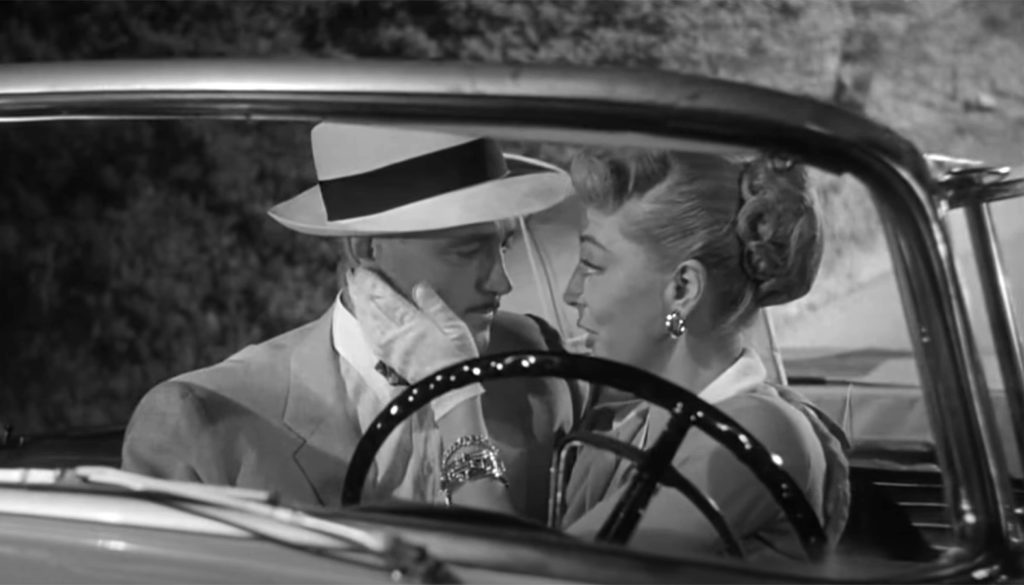“Each of us is in some way or another, and in succession, a criminal and a saint.”
— Catholic novelist Georges Bernanos (1888-1948)
My tastes range wide in movies, but top place goes to film noir, described by the Oxford Languages Dictionary as “a style or genre of cinematographic film marked by a mood of pessimism, fatalism, and menace.”
“The term was originally applied (by a group of French critics) to American thriller or detective films made in the period 1944–54 and to the work of directors such as Orson Welles, Fritz Lang, and Billy Wilder.”
In “Dark City: The Lost World of Film Noir” (Running Press Adult, $20.99), San Francisco-based Eddie Muller (the “Czar of noir”) explores several tropes of the genre: Vixenville (the femme fatale), the City Desk (newspaper grift), the Psych Ward, Thieves’ Highway (crime on the road), The Big House (prison movies).
Hollywood was the heartbeat of film noir, with many of them shot in the studios, if not the streets, stores, and homes of LA. I can’t get enough of the tough guys in hats, the dames with cinched-in waists, the sinister, bougainvillea-overhung alleys, the winding car chases up into the hills, the venal urges, the leering close-ups, the laughably convoluted plots.
A number of lesser-known favorites can be found free on YouTube: “No Man’s Woman” (1955), for example.
In the opening scene, platinum blonde “art dealer” Carolyn Grant (the great Marie Windsor, “Queen of the Bs”) is breezing along what looks to be the Pasadena Freeway south. She’s at the wheel of a snazzy cream-colored convertible with big fins, the top down, a pricey painting in the back seat, and her lover, an art critic who she’s stringing along in order to advance her career, riding shotgun.
When the wind starts blowing off the wrapping paper that’s protecting the “René” they’ve just bought, she pulls over so the guy can adjust it. “How could I get along without you, Wayne,” she purrs.” “How can I ever repay you?”
Wayne pulls her close for a long kiss, but Carolyn playfully pushes him away. “That’s all, darling. After all, Harlow still expects me at six.”
“Can’t we forget about Harlow?” growls Wayne.
“I have to show him some consideration, don’t I, darling?” Carolyn burbles, seductively trailing a white-gloved finger down Wayne’s cheek. “After all, he is my husband.”
If you’ve lived in LA for any length of time, you’ve driven that stretch of freeway countless times yourself. You know the smog-filtered sun, those shadows, the heat. You can almost smell the eucalyptus. You also know Carolyn, Wayne, and Harlow, in all their incarnations. They live in Los Feliz and Silverlake and South Pasadena now. They’re just as good-looking. They’re just as ruthless.
But film noir is way more than just a walk on the dark side. Sure, there are the psychopaths, the double-crossing gold-diggers in fur coats, the dirty cops. But almost invariably, at least one character is aiming for redemption — and willing to pay the price: the love-besotted newlywed who’s willing to take the fall for her guy, the mother covering for her wayward son, the husband who needs money to care for his sick wife, the chanteuse who’s working for the Resistance.
In film noir, crime never pays. But the chiaroscuro, the ambiguity (am I following God’s will, or my own?), the blind spot, the Achilles’ heel, the sense of being abandoned, exiled, and alone in a crowded city speak to a place deep in this human soul.
The down-on-his-luck guy in his undershirt, lying on his bed in a cheap boarding house watching a neon sign blink through a rain-glazed window: if you’ve never felt that way on, say, a Sunday afternoon, you’re hardly human.
So check out some of these LA-based classics. “In a Lonely Place” (1950), starring Humphrey Bogart and Gloria Grahame, filmed partly at the Villa Primavera at 1300 North Harper Dr. in West Hollywood. Orson Welles’ “Touch of Evil” (1958) — some say his masterpiece — shot in Venice from Feb. 18, 1957 to April 2, 1957.
Exteriors of the Dietrichson house, where Barbara Stanwyck lived with the husband she and Fred MacMurray knocked off in “Double Indemnity” (1944), were shot at the Spanish Colonial residence at 6301 Quebec Dr. in Beachwood Canyon.
The list goes on and on: “Sunset Boulevard” (1950). “The Big Sleep” (1946), “Private Property” (1960), a truly creepy voyeur movie shot in director Leslie Stevens’ home in the Hollywood Hills.
Not all noir films take place, or were shot, of course in LA. Not all of them end in tragedy.
Consider, for example, the closing lines of “Desert Fury” (1947), a deliriously over-the-top love pentangle directed by Lewis Allen and shot primarily in Arizona: one of the few noirs filmed in (lurid) color.
Bad guys John Hodiak and Wendell Corey have been disposed of. Mary Astor, casino owner and disturbingly possessive mother, has been sidelined. Blonde bombshell Lizabeth Scott (Paula) and hunk sheriff Burt Lancaster (Tom) are poised to be united at last.
It’s dusk and they’re looking out over the horizon.
“Nice view from here,” remarks Tom. “You can see Chuckawalla … if you want to.”
“I want to. It looks good to me.”
“Depends on where you’re sittin’.”
“And who you’re sittin’ with,” sums up Paula, as the two link arms and walk into the sunset.

